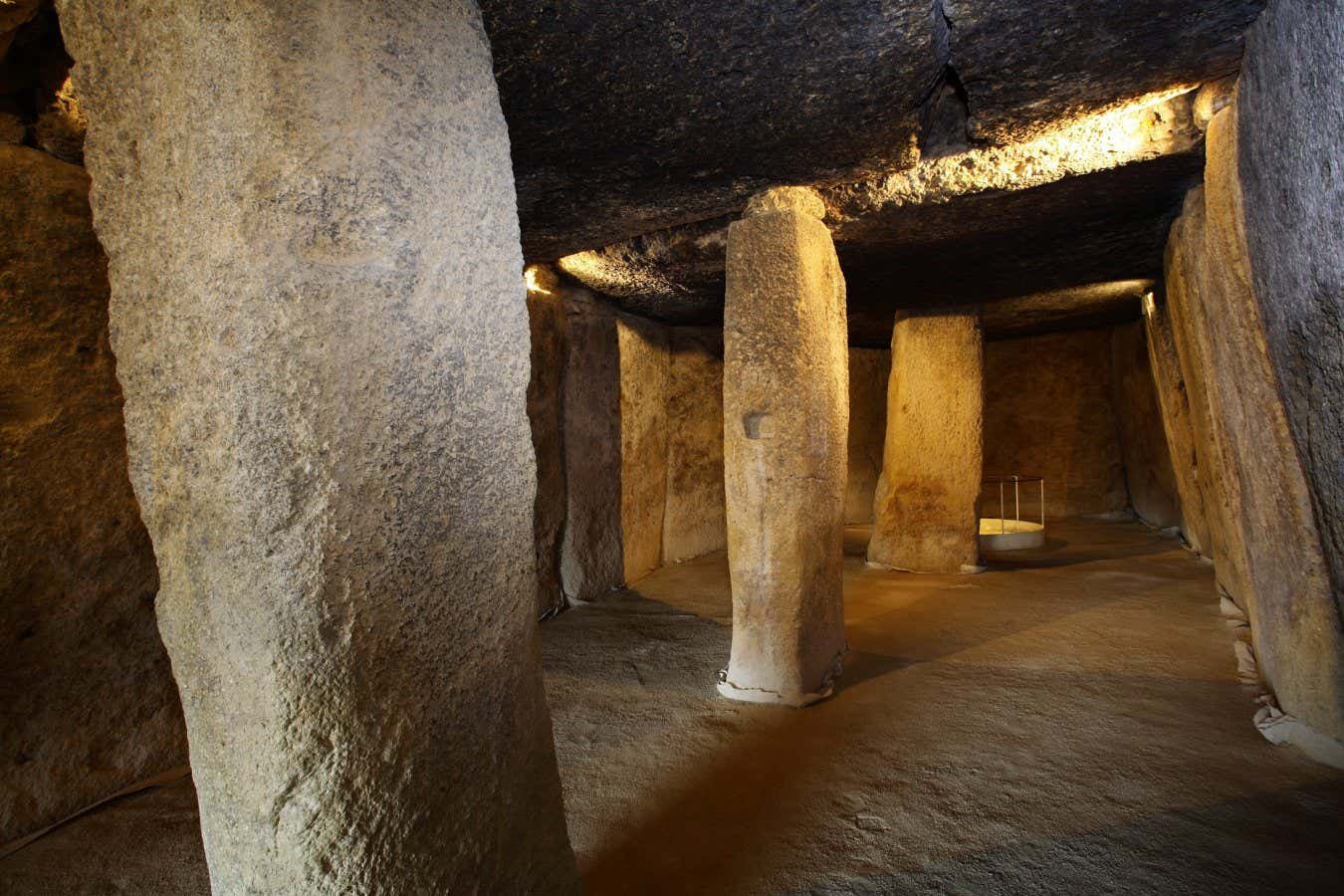
The interior of the monument in Spain known as the Menga dolmen
Miguel Ángel Blanco de la Rubia
Neolithic people seem to have understood sophisticated concepts in science, such as physics and geology, using this knowledge to construct a megalithic monument in southern Spain.
Called the Menga dolmen, it is among the earliest European megaliths, dating to between 3600 and 3800 BC. Its roofed enclosure was constructed from 32 large stones, some of which are the biggest used in such structures. The heaviest one weighs in excess of 130 tonnes, more than three times as much as the heaviest stone at Stonehenge in the UK, which was erected more than 1000 years later.
“[In the Neolithic Period], it must have been very powerful to experience this building made with these enormous stones,” says Leonardo García Sanjuán at the University of Seville in Spain. “It still stirs you. It still causes an impression even today.”
García Sanjuán and his colleagues have now performed detailed geological and archaeological analyses of the stones to infer what knowledge Menga’s builders would have needed to construct the monument, which is in the city of Antequera.
Paradoxically, they found that the rocks are a type of relatively fragile sandstone. While this means a greater risk of breaking, the team discovered that this was compensated for by shaping the stones so they locked into a very stable overall structure.
Neolithic people would have needed some way to make the blocks fit very tightly together, says Garcia Sanjuán. “It’s like Tetris,” he says. “If you look at the precision involved and how well each stone locks with each other, you have to think that they had an idea of angles, however rudimentary.”
The researchers also found that the 130-tonne stone, which was placed horizontally on top to form part of the roof, had been shaped so that its surface rises in the centre and declines towards the edges. This distributes force in a similar way to an arch, improving the roof’s strength, says García Sanjuán. “To the best of our knowledge, this is the first time that the principle of the arch has been documented in human history.”
Menga – whose purpose is unknown – is also aligned to produce distinct patterns of light in the interior during the summer solstice and has stones that are protected from water damage by several layers of carefully beaten clay, which adds to evidence supporting the builders’ knowledge around architecture and engineering.
“They knew about geology and the properties of the rocks they were using,” says García Sanjuán. “When you put all this together – you know, engineering, physics, geology, geometry, astronomy – it is something we can call science.”
There are Neolithic structures in France that rival Menga in size, but how they were built is less well understood, says García Sanjuán. “As it stands today, Menga is unique in Iberia and in western Europe.”
“What’s surprising about this is the level of sophistication,” says Susan Greaney at the University of Exeter, UK. “The architectural understanding of how the weight distribution works, I’ve not seen that anywhere else before.” But she adds that this is perhaps less a demonstration of an understanding of science than of architecture and engineering.
Topics:

Felecia Phillips Ollie DD (h.c.) is the inspiring leader and founder of The Equality Network LLC (TEN). With a background in coaching, travel, and a career in news, Felecia brings a unique perspective to promoting diversity and inclusion. Holding a Bachelor’s Degree in English/Communications, she is passionate about creating a more inclusive future. From graduating from Mississippi Valley State University to leading initiatives like the Washington State Department of Ecology’s Equal Employment Opportunity Program, Felecia is dedicated to making a positive impact. Join her journey on our blog as she shares insights and leads the charge for equity through The Equality Network.




